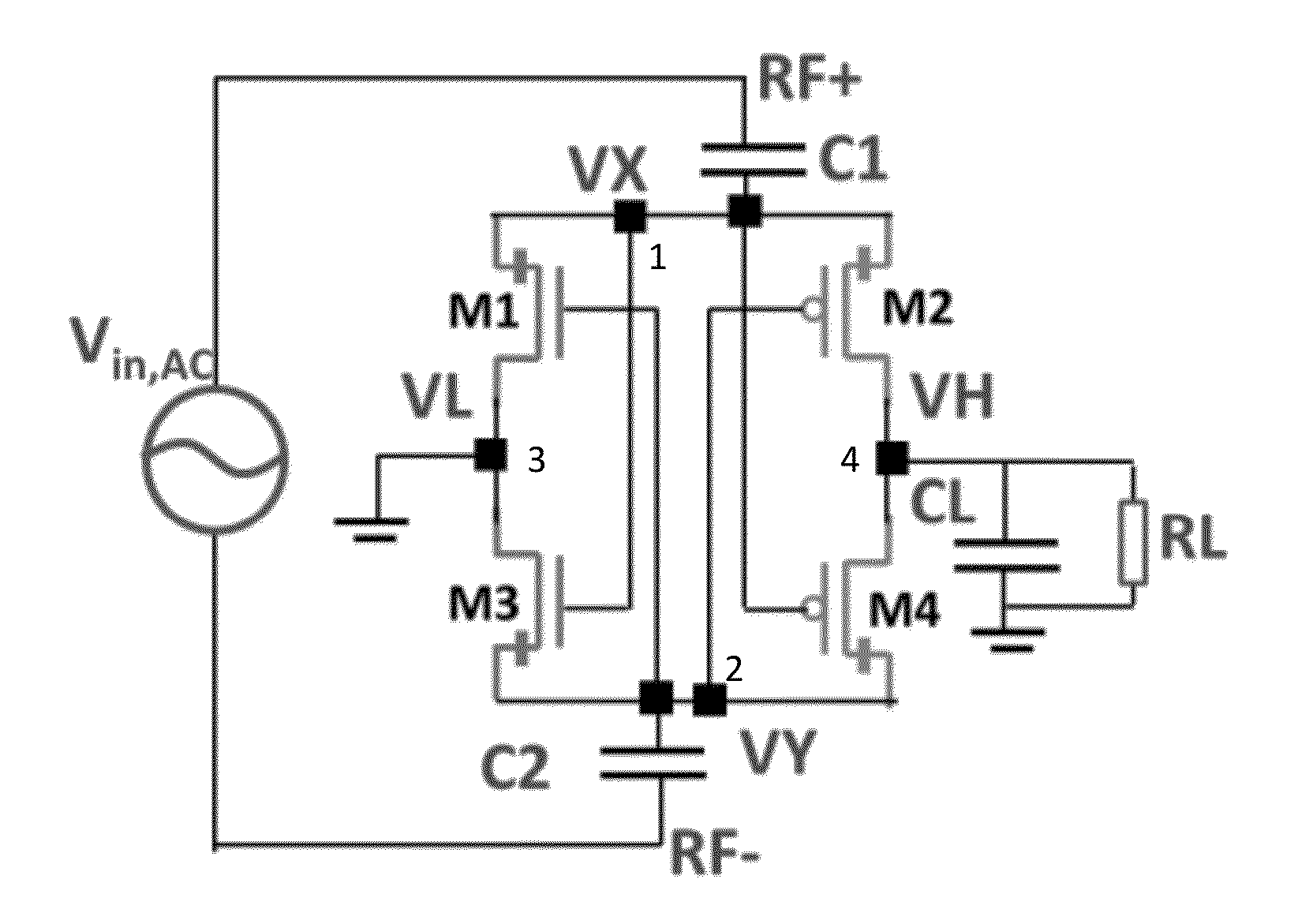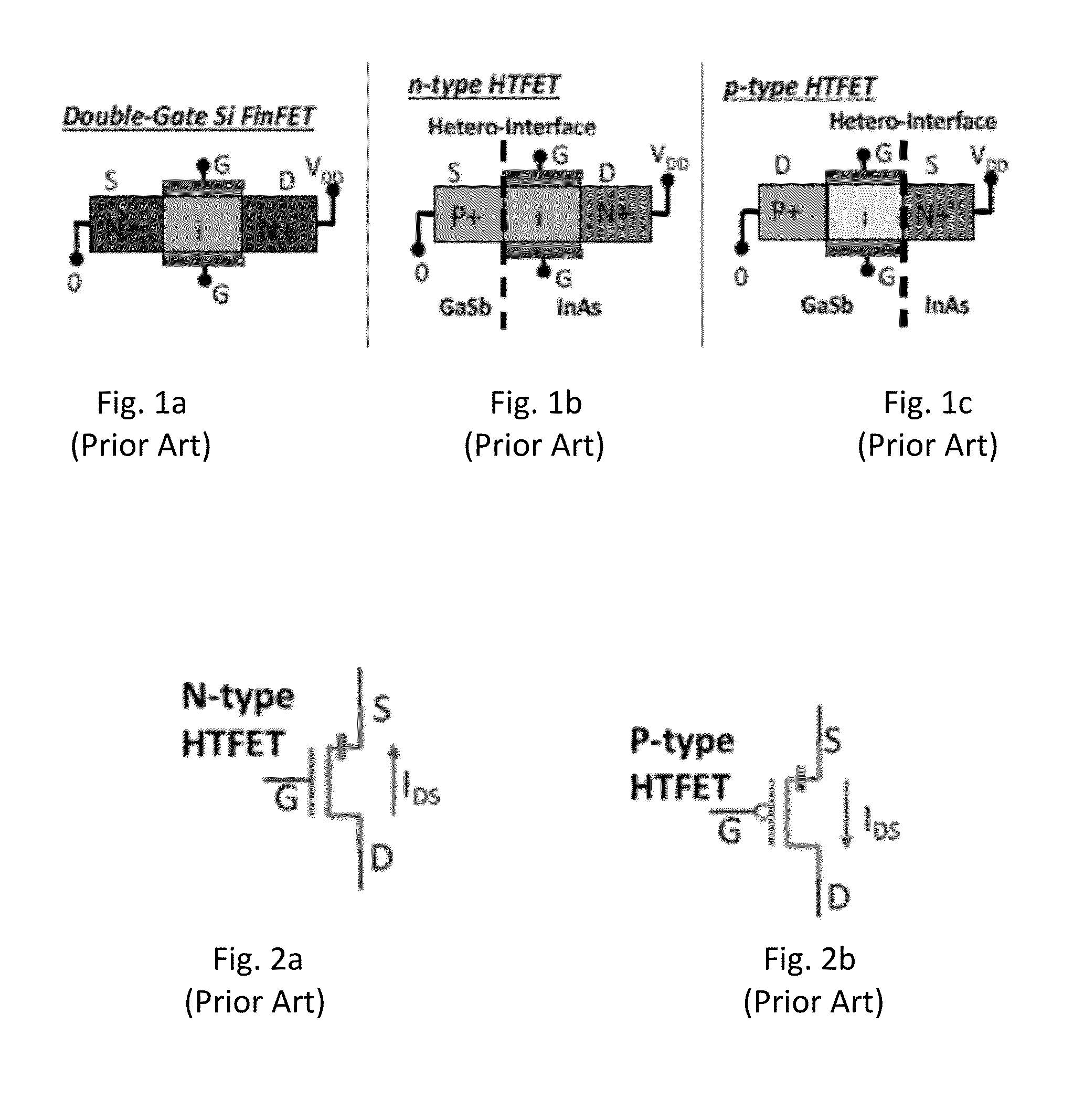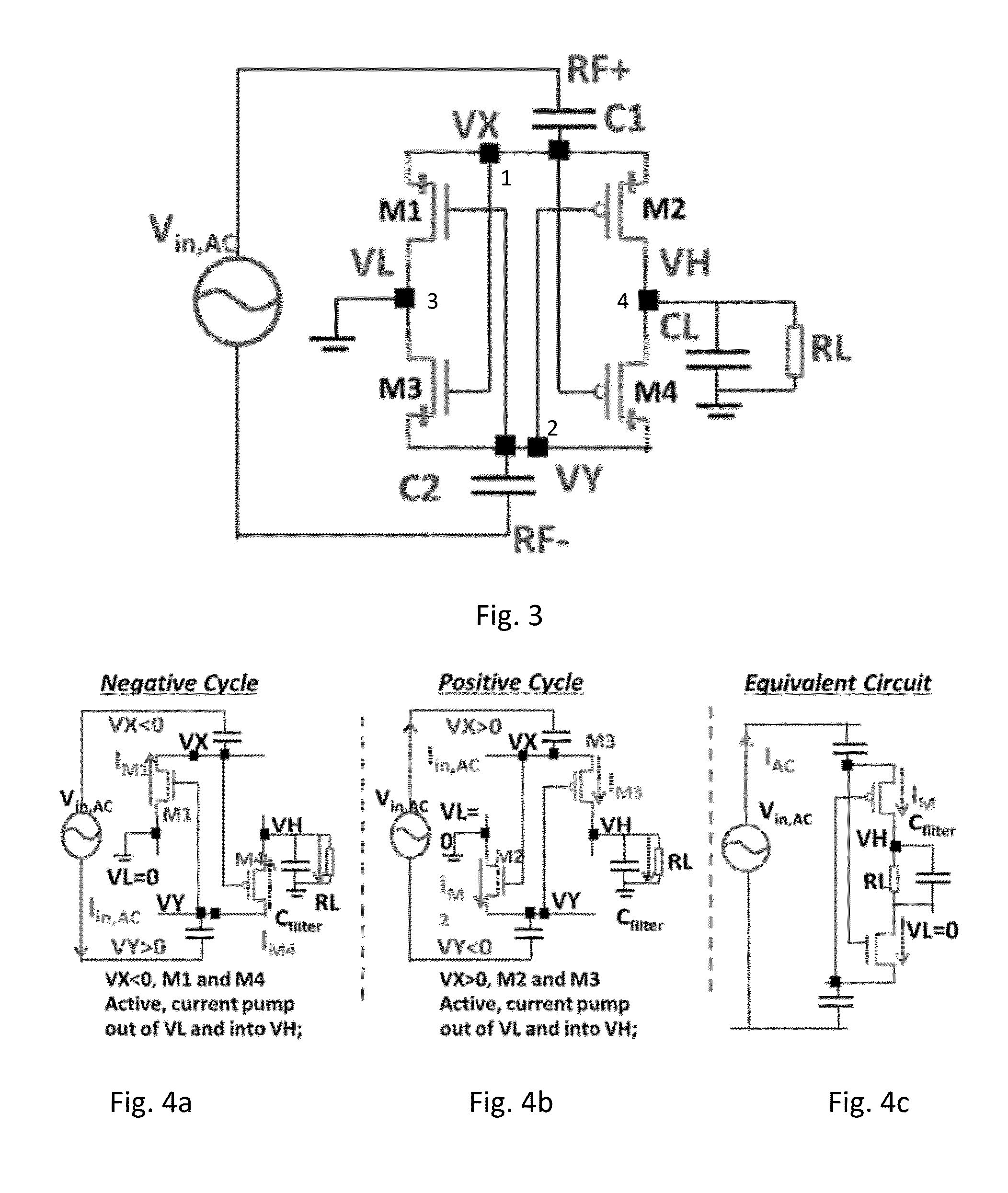Low Power Nanoelectronics
a nanoelectronics and low-power technology, applied in the direction of transformer/inductance circuit, transformer/inductance details, inductance, etc., can solve the problems of additional biological infection risk, limited computational capability, and limited operational range of existing rf-powered systems, so as to increase the power efficiency and power efficiency of these components.
- Summary
- Abstract
- Description
- Claims
- Application Information
AI Technical Summary
Benefits of technology
Problems solved by technology
Method used
Image
Examples
Embodiment Construction
[0079]As shown in FIGS. 1b and 1c, a Tunneling Field Effect Transistor (“TFET”) can be seen as a reverse-biased, gated p-i-n tunnel diode with asymmetrical source / drain doping. The reverse biased diode leakage determines the current in the off-state, or Ioff, of the TFET. The on-state is enabled by the gate-controlled band-to-band tunneling at the source-channel junction, and a sub-60 mV / decade steep-slope can be achieved in TFET with desired Ion / Ioff over a low power supply, or VCC, range. Moreover, with the introduction of materials from group III and group V of the periodic table (III-V materials) and a heterojunction, a III-V Hetero-junction TFET (“HTFET”) exhibits improved energy efficiency for below 0.5V VCC compared to the state-of-art CMOS technology. As described herein, these advantages exhibited by the TFET may be used to generate RF-power system components that not only improve the functionalities of the components themselves, but also the functionalities of the RF-syste...
PUM
 Login to View More
Login to View More Abstract
Description
Claims
Application Information
 Login to View More
Login to View More - R&D
- Intellectual Property
- Life Sciences
- Materials
- Tech Scout
- Unparalleled Data Quality
- Higher Quality Content
- 60% Fewer Hallucinations
Browse by: Latest US Patents, China's latest patents, Technical Efficacy Thesaurus, Application Domain, Technology Topic, Popular Technical Reports.
© 2025 PatSnap. All rights reserved.Legal|Privacy policy|Modern Slavery Act Transparency Statement|Sitemap|About US| Contact US: help@patsnap.com



